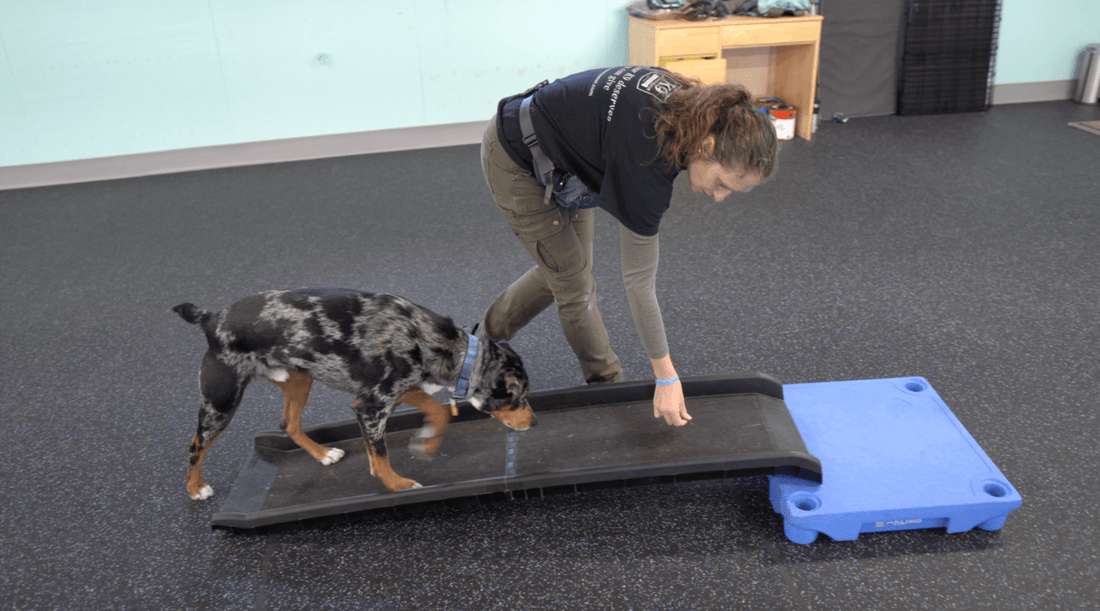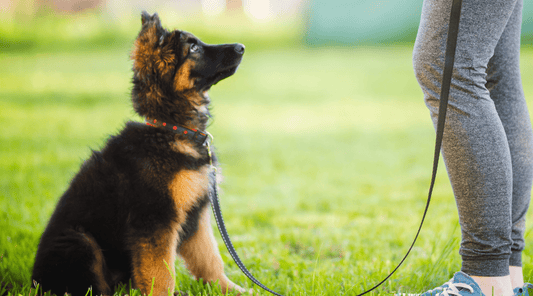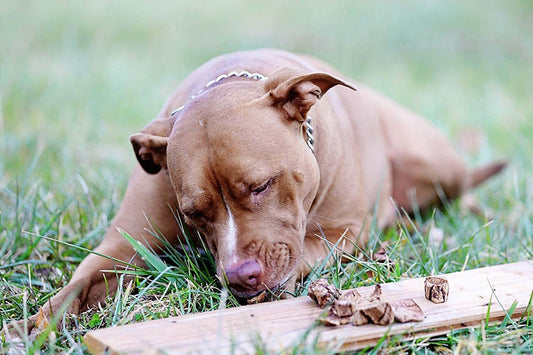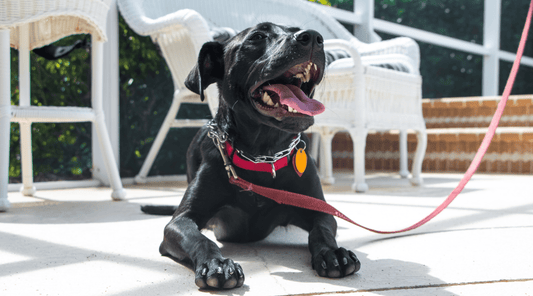
Dog Agility Training: How to Build Dog Obstacle Course
Dawn Miller Apr 12, 20255 Minute ReadLast Saturday, our local dog shelter set up a full-on dog agility training course on the soccer field. They hoped to lure in the big-hearted dog lovers in our neighborhood and convince them to add a new member to their packs.
Pixie’s eyes practically sparkled when she saw it. Of course, Bruno had more of a “Meh. Is this going to interfere with my napping?” expression.
But Pixie? She was ready to tackle every hurdle, tunnel, and weave pole like it was her personal playground.
Dog agility training is great for mental and physical exercise. And of course, you don't have to fill up a whole soccer field to reap the benefits. 3-4 obstacles can easily fit in most backyards.
What Is Agility Training for Dogs?
When people say "agility training for dogs," they're usually referring to an obstacle course built to promote agility and mobility.
You guide your dog through various challenges, such as jumps, tunnels, weave poles, and balance beams. The goal? To complete the course accurately and as fast as possible.
Does anyone remember the dog obstacle course game show "That's My Dog!" from the 1990s? It was the best show on television as far as my child brain was concerned. Found an episode on YouTube. Watching this as an adult proves to me how important teaching dogs basic dog commands like "Come", "Sit", and "Leave it" are. Some dogs on the show couldn't handle the distractions.
And let’s be real here—when you’re training a terrier like Pixie, speed isn’t the issue. It’s getting her to focus and not dart off to chase a leaf mid-jump.
I'm glad I learned how to use dog bone sessions to improve focus in hyper dogs like her.
Benefits of Agility Training for Dogs
- Physical Exercise - It’s a fantastic way to burn off excess energy, especially for high-energy breeds like Pixie.
- Mental Stimulation - Navigating obstacles requires problem-solving, which helps keep your dog’s brain sharp.
- Bonding Time - Working through a course together builds trust and strengthens your bond.
- Confidence Building - Dogs gain confidence as they master new challenges.
- Variety - It's easier for you and your dog to stay active and motivated if you do fun things together.
- Mobility Support - Agility training requires balance and coordination that can help a dog learn early how to navigate the mobility issues that are almost inevitable later in life. Of course, I suggest you also add natural glucosamine supplements to your mobility-support plan.
Bonus Material: Watch Amanda from K9 Connoisseur training a young dog to use a ramp.
Best Dog Breeds for Agility
When my neighbors saw how much fun an agility course is for dogs and their people, I overheard several asking what the best breeds are for agility training.
Of course, any able-bodied dog can learn agility training. It's true, if they are overweight, you may need to make some accommodations for them. But you've basically just put a dog gym in your backyard. So, if the two of you spend 5-10 minutes a day on agility, they may not be overweight for long.
But if you're adopting a dog specifically because you love this idea so much, I'd recommend you stay on the lookout for these obstacle-course-loving K9s at your local shelter:
- Border Collies
- Australian Shepherds
- Jack Russell Terriers (Pixie’s like, “Yes! Finally getting the recognition I deserve.”)
- Labrador Retrievers (And Bruno says, "who me?")
- Poodles
What You Need to Get Started
Pixie has officially declared agility training her new favorite hobby. We just built her a course in the backyard.
Equipment You’ll Need:
- Jumps - Adjustable hurdles you can set up in your backyard or even your living room (if you don’t mind the occasional knocked-over lamp). Check out these that Pixie chose from Amazon.
- Tunnels - Pixie was skeptical at first but quickly figured out that crawling through a tunnel meant more dog treats. This one is Pixie's favorite.
- Weave Poles - Setting these up took some patience. But watching Pixie zig-zag through them is pure joy for me and my partner. This set includes weave poles, a hurdle, a jumping hoop, and a training square. So, it's a great starter kit.
- Agility cones - These are an alternative to the weave pole. I like these because I can space them further apart, so I can weave between them with Pixie for my own agility training.
- Balance beams - Perfect for teaching coordination and building confidence. We just built one out of two-by-fours for the home improvement store.
- Ramp - Essential for large dogs that may develop joint problems later on.
- Targets or platforms - These are great for teaching your dog to stay and build impulse control.
- High Value Dog Treats - Dogs won't automatically know what all of this is. Use high-value treats like beef lung bites to guide them through the course.
How to Start Dog Agility Training
Step 1: Introduce Obstacles Slowly
Don’t overwhelm your dog by shoving them through a tunnel the first time out. It will feel like a trap; then it may take weeks for them to try again.
Set up your course. Then let them sniff, explore, and get comfortable with the equipment for a few days.
Train your dog on one obstacle at a time. Let them practice doing that one thing.
Step 2: Use High-Value Rewards
Pixie’s particular about her dog treats—if it’s not beef lung bites or a beef marrow dog bone, she’s not interested.
Treats should be tasty, healthy, and easy to break into small pieces. The goal is to keep your dog motivated without overfeeding.
Healthy treats also support muscle recovery and sustained energy for long-term health.
Step 3: Begin Agility Training on Each Obstacle
Keep several treats in a pouch when ready. Then palm a treat. Put your closed hand near your dog's nose and guide them.
So, for the weave poles, use your hand to guide them in a zig-zag between the poles. Give them the treat at the end. If they can't make it to the end yet, reward them for progress. You'll train on the balance beam in the same way, except no zig-zagging.
For the tunnel, use the command "stay" at the start of the tunnel. Run to the other side and say "come". If they run through the tunnel, reward them with the dog treat. If they go around, just try again.
If they just don't get it, try throwing some treats or one of their dog bones into the tunnel. Then tell them to "find it". Even if they go halfway and come back out the same way, you're familiarizing them with the tunnel.
Step 4: Keep It Fun
If your dog seems frustrated or overwhelmed, take a break. Agility training should be all about bonding and fun, not pressure and frustration.
Always end on a high note when using positive reinforcement training. This means you'll go back to a command they can perform every time with their eyes closed, like "sit". Give them a treat when they sit. Then end the session.
This creates a final positive memory that will make them more eager to try the agility course again later.
And that's about it. You're ready to build an agility course for your dog.
Want to take your dog’s training to the next level? Check out the 7-Day Dog Training Challenge and see just how much your dog can achieve.
👉 Join here
Available On:


Disclosure: This article may contain affiliate links, which means we may earn a small commission if you make a purchase through these links—at no extra cost to you. We only recommend products we trust and believe will benefit you and your K9.



